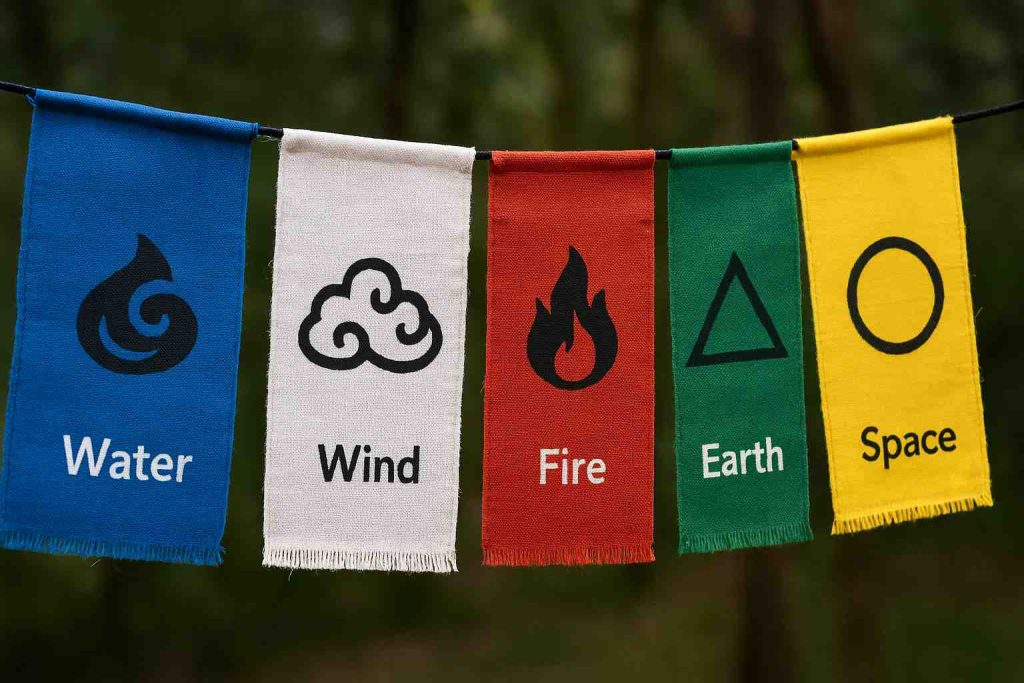
Five elements:
The five elements earth, water, fire, air, and space are essential for sustaining life and hold immense value for all living beings. Beyond their practical significance these elements additionally possess deep spiritual meaning in Hinduism, Buddhism, and various other religious traditions. You can observe the colors representing these elements around Buddhist sites, on houses, monasteries, trees and mountain peaks.
For first time visitors, the colors of the five elements could be interesting, as the sight of these vibrant colors fluttering in the air might be both new and striking. Known as “lungta,” a “wind horse,” or prayer flags, each flag features mantras and images of a horse. The horse, symbolizing the wind, carries prayers and blessings across the world. People believe that these prayer flags, adorned with mantras, bring prosperity, happiness and peace.
colors of the five elements and Their Significance:
Let’s explore the colors of the five elements and their meanings:
- Yellow symbolizes the “earth,” representing the land where we live and grow our food. This element is cherished and worshipped in various religious practices across Nepal.
- Green stands for “water,” which sustains life and vitality. Therefore religious rituals in Nepal, such as jal puja (water worship) highlights the importance of water in daily life and spiritual practices.
- Red represents “fire” or “light,” encompassing the energy of the sun and the worship of fire. This element plays a central role in many Nepalese traditions.
- White signifies “air,” the invisible yet essential element that supports all forms of life.
- Blue symbolizes the “sky” or “space,” reflecting the vast and boundless nature of the heavens.
Is visiting Nepal worth it?
Absolutely! Nepal is a sacred and spiritually enriching land where the five elements are revered as manifestations of mother nature. As the birthplace of Buddha, Nepal offers profound insights into the path to enlightenment and liberation from suffering. The towering Everest, known as the “roof of the world,” beckons adventurers and spiritual seekers alike. Discover the vibrant prayer flags and immerse yourself in the spiritual ambiance of Baudhanath Stupa and Swayambhunath Stupa.
Don’t wait any longer plan your visit to Nepal today. The Shangri-La Voyages Team eagerly awaits your arrival.
Visit Shangrila Voyages for more:
Namaste!







